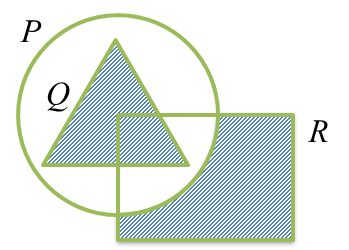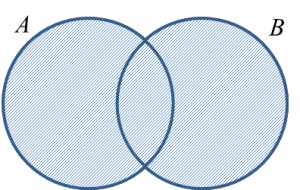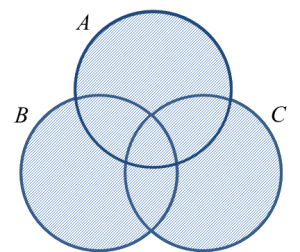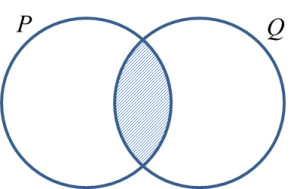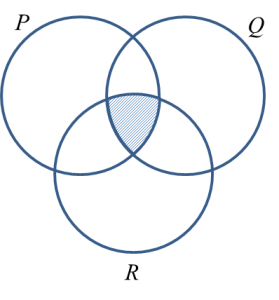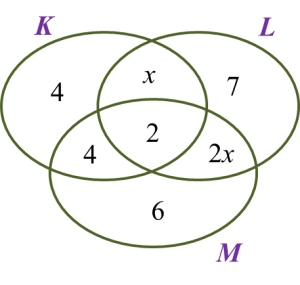Question 1:
The Venn diagrams in the answer space shows sets X, Y and Z such that the universal set, ξ=X∪Y∪Z
On the diagrams in the answer space, shade
(a)X’∩Y,(b)(X∪Y’)∩Z
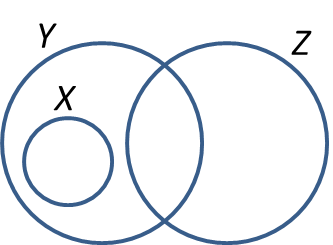
Solution:
- X’ ∩ Y means the intersection of the region outside X with the region Y.
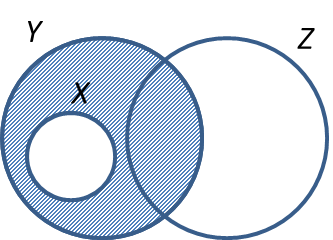
-
- Find the region of (X ∪ Y’) first.
- (X ∪ Y’) means the union of the region X and the region outside Y.
- The region then intersects with region Z to give the result of (X ∪ Y’) ∩ Z.
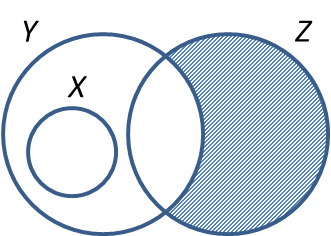
Question 2:
The Venn diagrams in the answer space shows sets P, Q and R such that the universal set,
On the diagrams in the answer space, shade
- Q ∩ R,
- (P’ ∩ R) ∪ Q.

Solution:
- Q ∩ R means the intersection of the region Q and the region R.

- Find the region of (P’ ∩ R) first.
- (P’ ∩ R) means the region that is outside P and is inside R.
- The union of this region with region Q give the result of (P’ ∩ R) ∪ Q.
